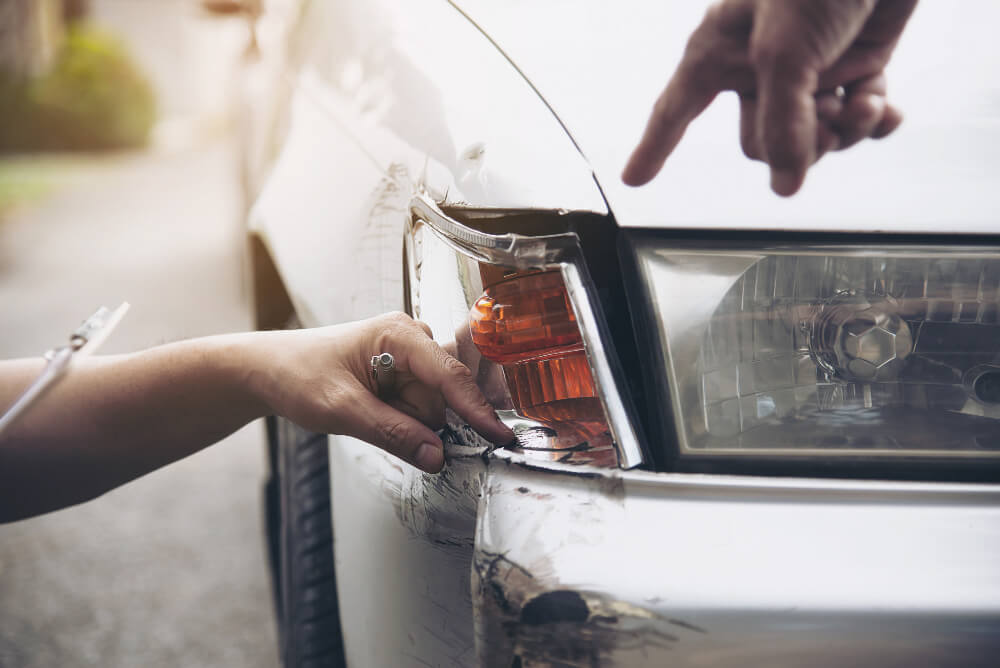Determining Liability In Rear-end Collisions
Rear-end collisions are the most common type of collision. Nearly thirty percent of all car crashes in the country are rear-ended collisions. Rear-end crashes can range from minor fender benders to devastating collisions.
What Is A Rear-end Collision?
A rear-end collision occurs when a driver hits the automobile directly in front of them from behind. These motor vehicle accidents often happen at a red light, a stop sign, or congested traffic. Usually, rear-end accidents involve two cars. However, such accidents can result in chain-reaction accidents involving multiple vehicles.
The higher the speed and more extensive the car, the more destructive the impact.
While some rear-end accidents can cause minor injuries, others can result in catastrophic and fatal injuries.
Rear-end accidents can also involve substantial property damage.
Even if you think that your injuries are not severe, promptly seek urgent medical advice and care. It is better to be safe than sorry. Even low-speed collisions can cause permanent, debilitating injuries.
Assessing your injuries is critical for your health, as well as determining your damages if you intend to present a claim with your insurance company or file a personal injury lawsuit.
Insurance companies or defense lawyers for the at-fault party will use any delay in reporting physical complaints to a hospital or doctor against you in your medical claim or personal injury lawsuit.
Common Causes Of Rear-end Accidents
The major causes of rear-end collisions include:
· Distracted driving (operating a smartphone, adjusting music, using GPS, or interacting with passengers)
· Speeding
· Tailgating
· Aggressive driving
· Driving under the influence of alcohol or drugs
· Driver fatigue
· Road defects
· Adverse weather conditions
Common injuries in rear-end crashes include:
· Traumatic brain injuries
· Whiplash
· Head, neck, and back injuries
· Spinal cord injuries
· Lacerations and bruises
· Sprains
· Broken bones
· Psychological damage
Proving Liability In Rear-end Collisions
In most cases, the primary cause of rear-end accidents is negligence.
The rear driver is generally liable for rear-end collisions. The default assumption is that drivers should maintain a safe following distance.
Louisiana laws require motorists to leave a reasonable and prudent distance between their vehicle and any vehicle in front of them.
In some cases, the motorist in the front could share some of the blame.
A rear-end driver may not be to blame or partially to blame in any of the following situations:
· Another car pushes the rear vehicle forward
· The front driver accelerates in reverse
· One or both tail lights aren’t working on the front vehicle
· The front vehicle has a flat tire or other malfunction, but the driver doesn’t turn on the hazard lights
· A defective vehicle design or manufacturing problem prevents the front driver from stopping. In this case, the vehicle manufacturer might be the responsible party.
Under Louisiana’s comparative negligence rules, if a driver is partially to blame for causing a crash, they can still recover partial compensation.
Determining fault in rear-end collision cases can be complex, where both parties are partly to blame.
To prove the at-fault driver’s negligence, you must demonstrate that they did not exercise care when driving.
When you’re in a rear-end collision, it’s up to you to prove the liability of the other drivers. You might rely on eyewitness testimony from witnesses. The police report may contain evidence, such as drawings of the events leading to the collision.
It may be essential to hire an accident reconstruction expert’s services to evaluate the damage and other evidence to determine the speeds of the vehicles at the time of the collision.
Bart Bernard Injury Lawyers: Unrivaled Expertise in Car Accident Cases
The consequences of a rear-end collision can be far-reaching, impacting daily physical function, emotional health, and financial security.
Many individuals work with the first lawyer they consult. It’s vital to work with a lawyer who has experience in cases similar to yours and a thorough understanding of personal injury and traffic laws in Louisiana.
A Louisiana personal injury attorney can help determine a case’s existence and the damages’ extent. If your claim has multiple defendants with different insurers, it may increase the value of a settlement since there may be more coverage for your injuries.
An experienced car accident lawyer can help you recover significant financial compensation to cover the cost of your medical bills, lost wages, and emotional and mental distress.
Louisiana personal injury lawyer Bart Bernard has over twenty-five years of expertise in dealing with the issues that arise from motor vehicle accidents. Motor vehicle accidents represent some of Attorney Bart Bernard’s significant wins. Attorney Bernard probes into the intricacies of car insurance policies, Louisiana traffic laws, and procedures to establish fault.
If you or a loved one have suffered injuries in a rear-end auto accident anywhere in Louisiana, Attorney Bernard can accurately illustrate your injuries with evidence and expert testimony to ensure you receive fair and just compensation for your injuries.
Contact us immediately to schedule a free consultation with an experienced rear-end collision attorney at our Louisiana personal injury law firm.




